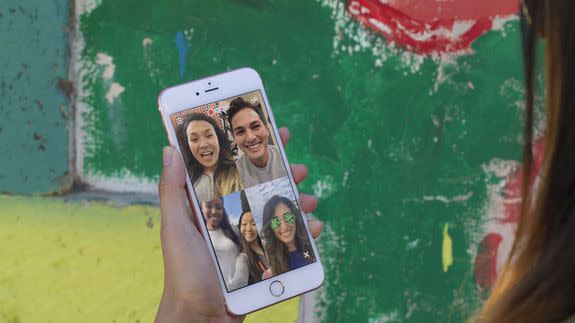Teen-friendly app Houseparty comes from an unlikely developer

Meerkat may have helped ignite the livestreaming craze but its creators' latest app is taking a different approach to video.
Instead, the newly-launched Houseparty, out now on Android and iOS, is a Snapchat-like app for group video calls.
The idea, the company says, is to capture some of the spirit of Meerkat but in a more personal way that encourages users to participate. Unlike Meerkat, which was all about public broadcasts, Houseparty's video calls are for small groups of friends.
You can add friends based on the phone numbers you have stored in your contacts or search for their usernames. Once you open the app, you can join "rooms" (the apps' name for chats) with other friends who are currently in the app.

Chats are limited to eight participants per room, but you can have as many rooms as you want (you can navigate between simultaneous chats by swiping across the screen.)
The company behind Houseparty, now called Life on Air, has apparently been testing Houseparty since the beginning of the year, but has done its best to distance itself from the Meerkat name. Ben Rubin, the CEO of Meerkat, had previously revealed that his company was pivoting away from live video but hadn't elaborated on what their new product would be other than to say it would be a video-focused social network.
Despite flying pretty far under the radar until now, the app has apparently already amassed a sizable user base, primarily among teenagers. In many ways, the app is tailored to these younger users: emoji are sprinkled liberally throughout the app and the app's interface, which launches directly in the camera, feels remarkably similar to Snapchat.
So many emoji in @HousepartyCare pic.twitter.com/RuVUs7tlQP
— Karissa Bell (@karissabe) September 29, 2016
There are also some fun Easter eggs, like a "stranger danger" warning that appears if a mutual friend who you don't already know joins one of your chats. (The company tells us this is apparently how its teenage users flirt within the app because, well, of course they do.)
As in Snapchat, the app's design isn't very intuitive and it mostly avoids explaining its features as you go (sound familiar?). In other words: The learning curve may be a bit high if you're over 23.
Not that that matters, at least for now. Due to an early marketing push at some college campuses, Houseparty has already had a fair bit of success in the App Store and the company says it expects that will continue now that school is back in session.

 Yahoo News
Yahoo News 